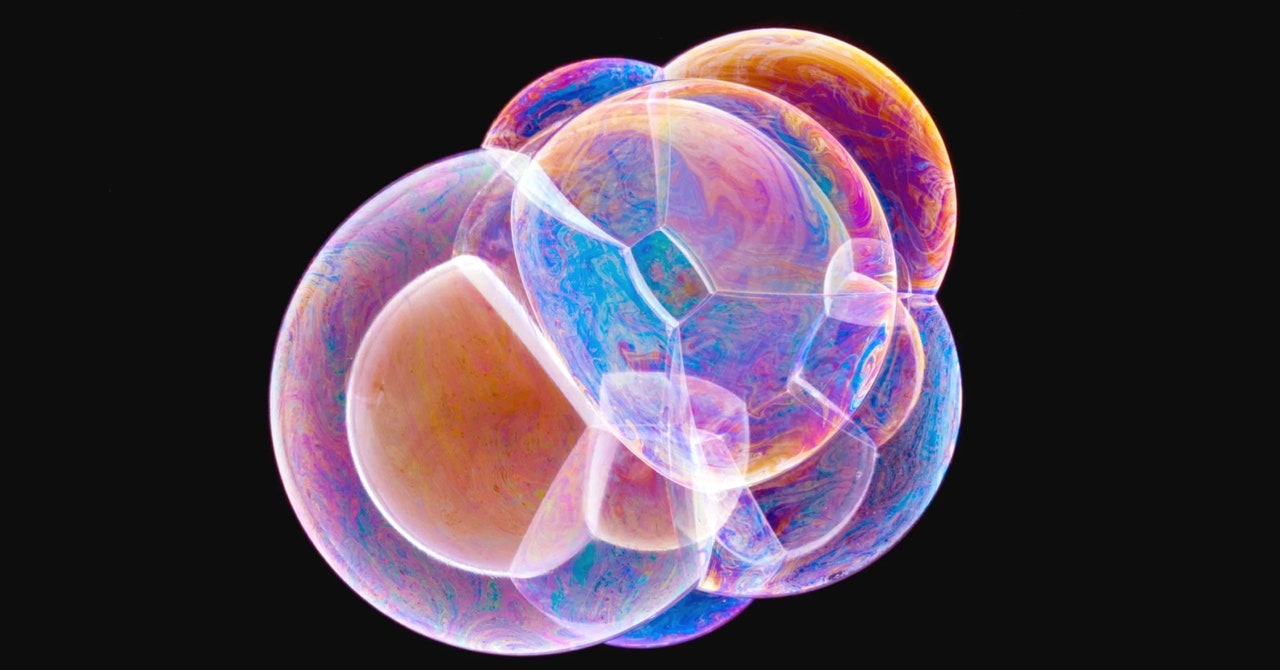
Then last fall, Milman came up for sabbatical and decided to visit Neeman so the pair could make a concentrated push on the bubble problem. “During sabbatical it’s a good time to try high-risk, high-gain types of things,” Milman said.
For the first few months, they got nowhere. Finally, they decided to give themselves a slightly easier task than Sullivan’s full conjecture. If you give your bubbles one extra dimension of breathing room, you get a bonus: The best bubble cluster will have mirror symmetry across a central plane.
Sullivan’s conjecture is about triple bubbles in dimensions two and up, quadruple bubbles in dimensions three and up, and so on. To get the bonus symmetry, Milman and Neeman restricted their attention to triple bubbles in dimensions three and up, quadruple bubbles in dimensions four and up, and so on. “It was really only when we gave up on getting it for the full range of parameters that we really made progress,” Neeman said.
With this mirror symmetry at their disposal, Milman and Neeman came up with a perturbation argument that involves slightly inflating the half of the bubble cluster that lies above the mirror and deflating the half that lies below it. This perturbation won’t change the volume of the bubbles, but it could change their surface area. Milman and Neeman showed that if the optimal bubble cluster has any walls that are not spherical or flat, there will be a way to choose this perturbation so that it reduces the cluster’s surface area—a contradiction, since the optimal cluster already has the least surface area possible.
Using perturbations to study bubbles is far from a new idea, but figuring out which perturbations will detect the important features of a bubble cluster is “a bit of a dark art,” Neeman said.
With hindsight, “once you see [Milman and Neeman’s perturbations], they look quite natural,” said Joel Hass of UC Davis.
But recognizing the perturbations as natural is much easier than coming up with them in the first place, Maggi said. “It’s by far not something that you can say, ‘Eventually people would have found it,’” he said. “It’s really genius at a very remarkable level.”
Milman and Neeman were able to use their perturbations to show that the optimal bubble cluster must satisfy all the core traits of Sullivan’s clusters, except perhaps one: the stipulation that every bubble must touch every other. This last requirement forced Milman and Neeman to grapple with all the ways bubbles might connect up into a cluster. When it comes to just three or four bubbles, there aren’t so many possibilities to consider. But as you increase the number of bubbles, the number of different possible connectivity patterns grows, even faster than exponentially.
Milman and Neeman hoped at first to find an overarching principle that would cover all these cases. But after spending a few months “breaking our heads,” Milman said, they decided to content themselves for now with a more ad hoc approach that allowed them to handle triple and quadruple bubbles. They’ve also announced an unpublished proof that Sullivan’s quintuple bubble is optimal, though they haven’t yet established that it’s the only optimal cluster.
Milman and Neeman’s work is “a whole new approach rather than an extension of previous methods,” Morgan wrote in an email. It’s likely, Maggi predicted, that this approach can be pushed even further—perhaps to clusters of more than five bubbles, or to the cases of Sullivan’s conjecture that don’t have the mirror symmetry.
No one expects further progress to come easily; but that has never deterred Milman and Neeman. “From my experience,” Milman said, “all of the major things that I was fortunate enough to be able to do required just not giving up.”
Original story reprinted with permission from Quanta Magazine, an editorially independent publication of the Simons Foundation whose mission is to enhance public understanding of science by covering research developments and trends in mathematics and the physical and life sciences.


